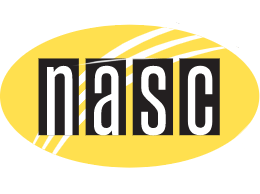Dog Food With Glucosamine ... Does It Support Your Dog’s Joints?

“What can I give to my dog for stiffness, achy joints and terrible mobility?” If I asked you this simple question, what’s the first thing you’d think about?
Chances are the word glucosamine popped into your cloud of really good ideas. And that’s because glucosamine has earned its reputation as a joint care supplement! It’s why so many joint support dog foods advertise their glucosamine content.
But is specialty kibble enough to help support your dog’s joints? To find out, my team at Planet Paws took a look at the glucosamine content of some popular joint support brands. But before I share the results … let’s talk about what exactly glucosamine is.
RELATED: How to naturally manage arthritis in dogs ...
What Is Glucosamine?
Glucosamine is a nutritional supplement found on virtually every health store and pet shop shelf. Two of the most common forms of glucosamine are ground up shellfish shells, such as lobster, shrimp, or mussels, and microbial grain fermentation.
The name glucosamine comes from the combined names of glucose and the amino acid glutamine. Glucosamine is naturally found in your dog’s body and helps with lubrication and shock absorption in the joints. And it produces glycosaminoglycan and helps repair the creakiness in your pet’s joints by promoting cartilage and tissue health.
It’s pretty well established that glucosamine is a good choice for dogs. So the next question is … does your dog need a glucosamine supplement?
Is Joint Support Kibble Just A Marketing Ploy?
Head to a pet food store and you’ll see food packages with wording like “Contains a natural source of glucosamine.” It may even promise healthy, strong joints through joint, mobility, or senior support labels. In fact, many pet food manufacturers claim their kibble has a good amount of glucosamine.
Leading dry food manufacturers go on to say they use lots of by-products because they’re a rich natural source of glucosamine. This leads consumers to believe the food gives their pet a sufficient amount of glucosamine, but is this true? Is it enough?
According to research, your pet needs an average of 20 mg of glucosamine per pound of body weight a day. This means that a 50 pound adult dog would need about 1000 mg of glucosamine a day.
Can you trust your dog’s food to supply it in the recommended amounts? That’s what we looked into ...
Our Investigation
The Planet Paws Team and I did an investigation and examined kibble, the most popular form of pet food. The four most common places to find kibble are big box stores, wholesale clubs, specialty pet shops, and veterinarians’ offices.
We decided to head to the most popular spot first, the big box store/supermarket. The Planet Paws team selected and analyzed the bag that most strongly promoted joint support and glucosamine on the bag. Next, we looked at the guaranteed analysis. All pet food labels require a guaranteed analysis on the package to advise the buyer of the product’s nutrient content. We looked at where the glucosamine was listed and noted the following: glucosamine min. 300 mg/kg.
Ok, next it was time for a little math!
Now, 300 mg/kg means there is 300 mg of glucosamine per kilogram of kibble. In the pet food industry, four cups of kibble generally equals one pound. Therefore 1 kg (2.2 lbs) is equal to 8.8 cups. Do you follow?
So if our average 50 pound dog needs 1000 mg of glucosamine per day, we would have to feed that dog over 29 cups of big box store pet food each and every day to meet his needs!
The serving size on the bag suggests that a dog of this size would only need two cups per day, so 29 cups might make him a little overweight!
Next, we jumped back into our car and hoped for better success at our next destination. We headed to the wholesale club, a high end pet shop, and finally the journey ended at our local vet’s office. We purchased one bag of each of their best selling kibble, all of which carried promises of joint support.
Our Findings
After we picked up the food, it was time for some more math. Here’s what we found …
The Wholesale Club
The Healthy Joint Support food that we bought claimed it had, “Natural sources of glucosamine to help support healthy joints, cartilage and mobility in Large Breed Adult dogs.” And the guaranteed analysis read: Glucosamine, minimum 375 mg/kg.
This means our same 50 pound dog would have to eat over 23 cups per day!
High End Pet Shop
The high-end kibble we bought at the pet shop claimed: “Contains guaranteed levels of glucosamine and chondroitin sulfate.” The guaranteed analysis read: glucosamine, minimum 500 mg/kg.
Again, we would need almost 18 cups in order to reach 1000 mg. And this was in an $80 bag of kibble!
Veterinarian’s Office
Last but not least, was the local veterinarian brand … we hoped this one would save us. To put this last hope to the test, we purchased a $120 bag of kibble. This had to work, right? The bag claimed that it would “help alleviate pain and improve joint support”. The guaranteed analysis read: glucosamine hydrochloride minimum 950 mg/kg.
This was by far the highest level in all of the bags we’d tested, but was it enough?
Alas, 950 mg per 8.8 cups would mean our 50 pound dog would need over 9 cups a day to receive the 1000 mg of glucosamine needed. And according to this product’s manufacturer, we should only feed 3 ½ cups a day. That means our pooch would only receive 377 mg of glucosamine a day. This is a far reach from our desired amount of 1,000 mg.
Unfortunately, not one of the bags of kibble could meet our required supplement needs, no matter where we purchased the food.
So where does that leave us? Is all hope of making friends with our beloved glucosamine lost? Not exactly...
How To Add Glucosamine To Your Dog’s Diet
If glucosamine is what you need, then you’re better off adding a joint supplement or feeding a species appropriate raw diet to your pet.
For raw diet enthusiasts, an inexpensive source of glucosamine is the cartilage of fresh beef trachea. In fact, any parts with a lot of cartilage and connective tissue, like chicken feet or pork tails, are a good source of naturally occurring glucosamine and chondroitin. Beef trachea is around 5% glucosamine. That means just one ounce of trachea could hold over 1400 mg of glucosamine.
Who Can You Trust?
Here’s the pivotal question: can we trust kibble marketing?
This is where it gets tricky because none of the bags of kibble we looked at technically said we could rely on it to contain the recommended dosage needed for our pet’s diet.
But as pet parents, we owe it to our fur kids to read the fine print. We can’t rely on the claims on the bag and the assumptions we draw from them. Doing your research is the only way you can ensure your dog gets the nutrition he needs.
RELATED: Turmeric can help with your dog's joint pain and more ...
Written By: Rodney Habib
Labeled the "Jamie Oliver of pet food" by his supporters, Pet Nutrition Blogger Rodney Habib is an award winning blogger, magazine writer, and is currently filming a TV series for Animal Planet focusing on pet obesity. He travels around the world, gathering current data from the Pet Industry, and relays it to his supporters. He has one goal in mind when it comes to all his work: to be the change he wants to see in the world. Visit Rodney and his retail pet store, Planet Paws at www.facebook.com/RodneyHabibBlog/



